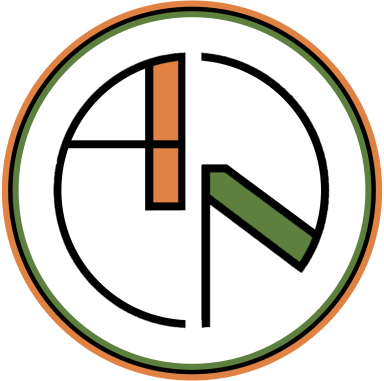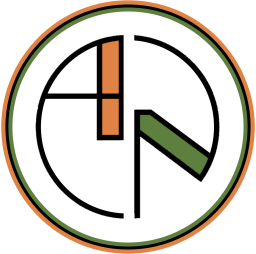BLOG
31
MAR
2025
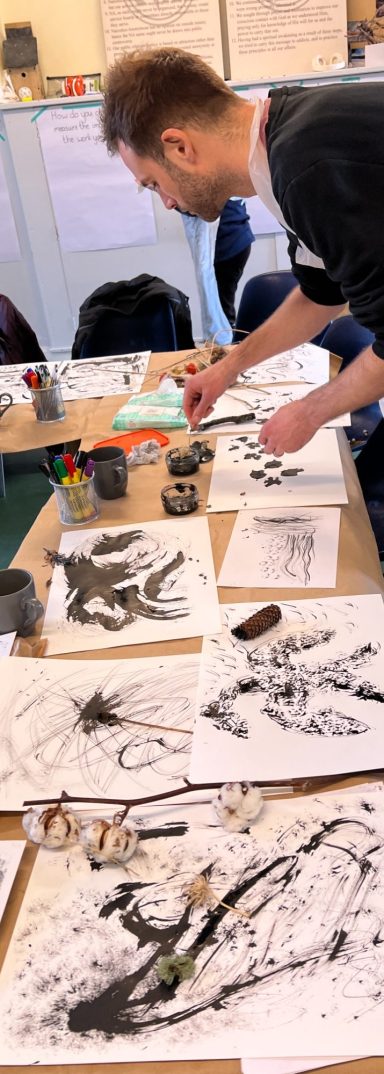
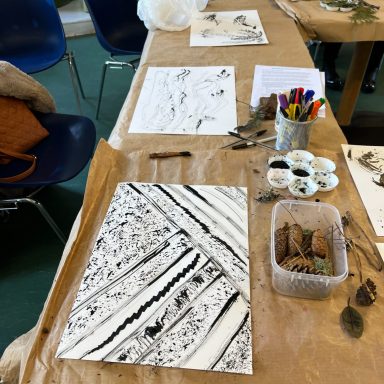

Nature Recovery
I was delighted to be invited back to Dundee to work with Hope and her colleagues at the RSPB, delivering an art workshop to folks who work to support others through addiction and recovery.
When I am preparing for a workshop, I consider who I will be working with, and what their experience, confidence, and attitudes to art might be. The aims of this workshop were to bring people together from all over Dundee, people who work with those suffering addiction, or alcoholism and those who are recovering and building their lives and their communities. The RSPB team are building a programme that gets people in recovery into nature, so that they can feel the benefits. This workshop was organised to find out what people in recovery need, what the RSPB can best do to support them and what barriers need to be considered. The RSPB team needed to have a conversation with the support workers from across the community.
This is where the art comes in.
Firstly, we wanted to demonstrate the kind of art workshop that could be part of the nature recovery programme. What service users could expect, as they spend time in nature, and are guided through creative ways to reflect. But secondly, and probably more importantly, the art workshop was to loosen everyone up, to get them feeling creative and relaxed and talkative, so that they could more easily converse with one another about what service users actually need.

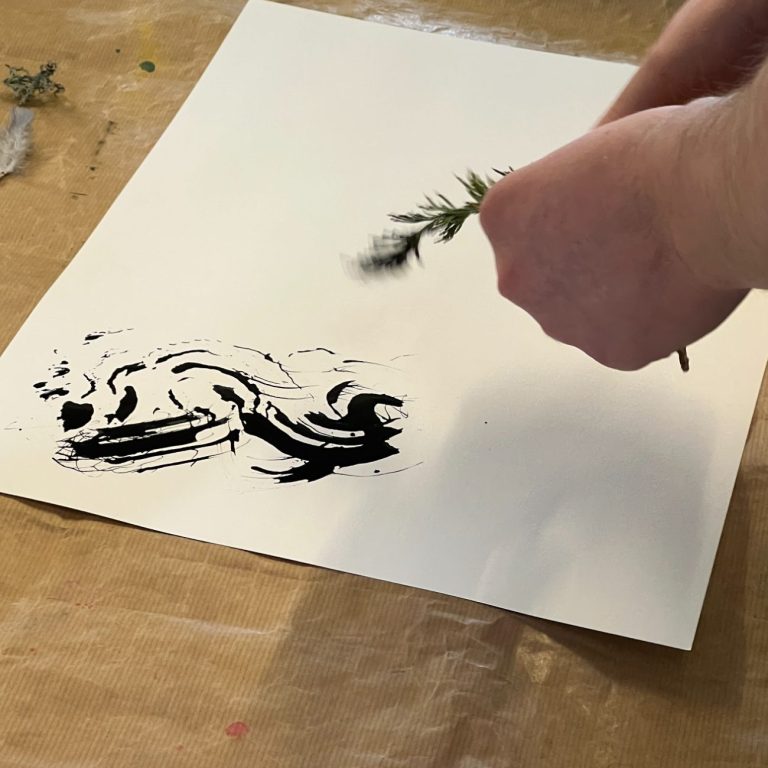
When working in the third sector, it is so important to ask these sorts of questions: to have a grassroots approach, asking people how you can be helpful, rather than being prescriptive and top-down. I was so impressed by Hope and her colleagues, as they created this atmosphere of being ready to listen and to learn.
My role, as an artist, was to ensure that everyone felt inspired and able to chat. I had no idea what experience with art the participants had, so it was much more important to deliver a workshop that was playful, rather than focused on any particular artistic outcome.
I first asked the participants to consider the objects they spotted as they explored the gardens of The Friary. The leaves, the twigs, the random pieces of nature. I asked them to bring back objects or photos. When they returned to the workshop space, I had rearranged the tables and brought out paper and inks. I first asked the participants to use their leaves, twigs and pinecones to draw, dipping them into the ink and experimenting with the marks they could make.
A task like this is a great leveller. It is fun, and silly, and creative, and impossible to get wrong because there is no concept of ‘right’. The participants jumped right in and started playing and mark-making, getting more and more creative with each twig and new sheet of paper. And importantly, they started talking to one another. A much more relaxed feeling descended over the room as we were united in play.

On a separate table, I set out printing inks on printing plates and demonstrated three different ways of monoprinting. Monoprinting is a technique that can be endlessly creative but it also benefits from the thrill of the reveal – that moment when you peel the paper back to see what ink and pressure has created. With very little instruction, and a lot of enthusiasm, the participants took turns in printing feathers, leaves and twigs, and printing lovely drawings by removing or scratching into the ink. I had the lovely job of standing back and watching the satisfaction and delight as participants revealed their creations.
We only had a short amount of time before I had to start tidy up. I washed up the dishes of ink, the rollers, the plates, and then came back into the main room where everyone was talking animatedly. The art had succeeded in making each participant come out of their shell, and they were busy sharing their experiences, talking about how they could make the best recovery programme possible, and sharing their knowledge and wisdom as the RSPB team listened and took notes.
Thank you to Hope for organising a great workshop, and to all the participants for their enthusiasm, creativity and wisdom.

5
MAR
2025

REALITIES at Ninewells Community Garden
At the start of March I took a taxi to a hidden Eden in Ninewells Hospital, on the west side of
Dundee, The Ninewells Community Garden. Walking through the garden I spotted areas of wilderness, tidy allotments, goldfinches, sparrows and great tits, and large mature trees.
There, amongst the borders and the shrubs stood a shed with large, double-glazed windows
keeping the heat from the log-burning stove inside. I had come to deliver a workshop to a
small group of participants: Jek, the custodian of the garden, and nurses, educators and
support workers from a variety of different charities and organisations.
The gardens don’t just exist to look pretty. They are there to provide a space of work,
community and relaxation to people in recovery. The participants of the workshop that day were the links to individuals recovering from addiction who could benefit from the garden andthe peace that it provides.
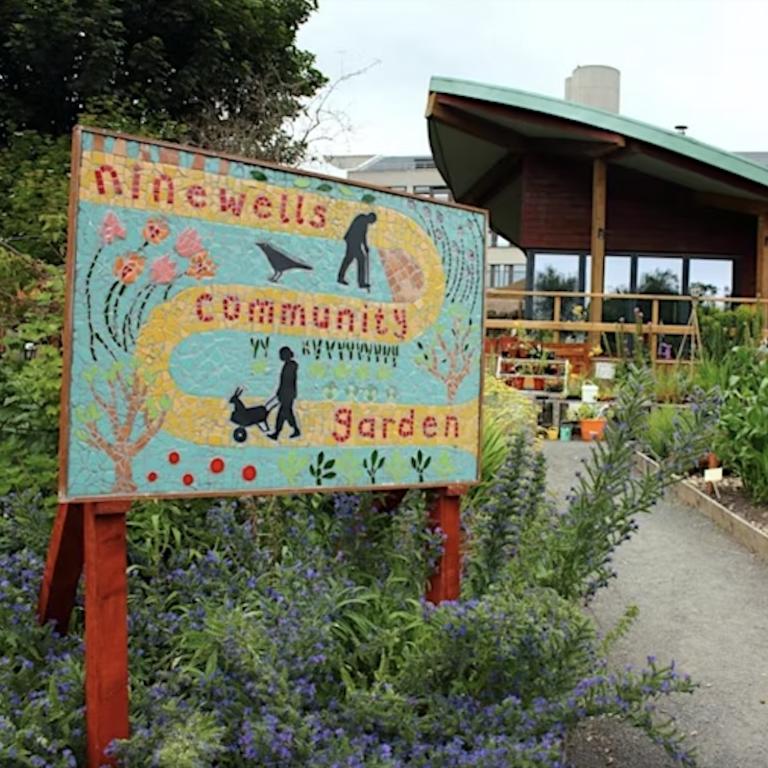
We had all met to discuss what resources we could draw together to make that experience as good as possible in a structured project. For my part, I was tasked with delivering an art workshop, a sort of taster of what creative activities could be on offer for individuals making use of this project. The idea being that patients in recovery may benefit from creatively expressing their interactions with the garden, and with the wider
natural world, reestablishing a connection with the earth, the plants, the animals who live in
the garden.
The schedule for the morning’s meeting was packed, meaning that the workshop needed to
be fun, accessible and playful, not laborious and involved. I asked the participants to pay
particular attention to the sky whilst they went to explore the grounds, looking at the bare
trees against the sky.
When they returned, I demonstrated how chalk pastels could be used on slightly-rough
pastel paper to draw scenes of skies filled with rolling billowing clouds, or gentle sunsets. We
talked about how we could achieve effective results using only two or three colours and
using our hands to blend the pastels together in a variety of movements.
Once the participants had finished their first drawings, I demonstrated how hairspray can be used to fix your drawing in place, so the chalk doesn’t rub away latter. We then explored different papers, the variations of colour and texture leading to different artistic outputs.
The hour sped by, with dozens of drawings created, and conversations flowing in the way
that is only really possible when people are engaging creatively and playfully. The benefit of
drawing something like clouds is that they can take any shape, form or colour, and they can
be drawn with great detail, or tending towards abstraction. There’s no way to get it wrong. At
the end of the workshop, I asked the participants which papers they had preferred. Pastel
paper, like most art materials, can range from the cheap and accessible to the prohibitively
expensive. Most of the participants actually preferred the cheaper paper.
Thank you so much to Jek and the workshop participants for welcoming me into the
Ninewells Community Garden.
12th & 26th
FEB
2025
REALITIES at Ninewells Community Garden
I delivered two creative taster sessions at Ninewells Community Garden on 12 and 26 February, to the groups brought together for a full day of discussions and planning around the Realities project. The wood burning stove was delightful and kept us very cosy in the Garden’s enclosed space. Meeting room quickly turned into workshop space and, having mindfully picked up some leaves and other bits of natural materials on a tour of the garden, participants made vaseline prints on photographic paper.
This playful and experimental process involves coating the leaf in vaseline then printing it onto the darkroom paper. I brought some of my stash of old ‘expired’ darkroom papers that are great for these experiments. The print is then put in a tray of developer (standard or home made from plants..), given a soapy wash to remove the vaseline, then fixed.
I enjoyed seeing the results, which were crisp prints in some cases, unexpected at times and blobby abstract shapes in some cases where too much vaseline was used. Both groups were open to experimenting and made lovely work.
I look forward to heading back to the Garden in May for some sessions with participants that will likely include some cyanotypes, lumen prints, phytograms and possibly some home made inks.
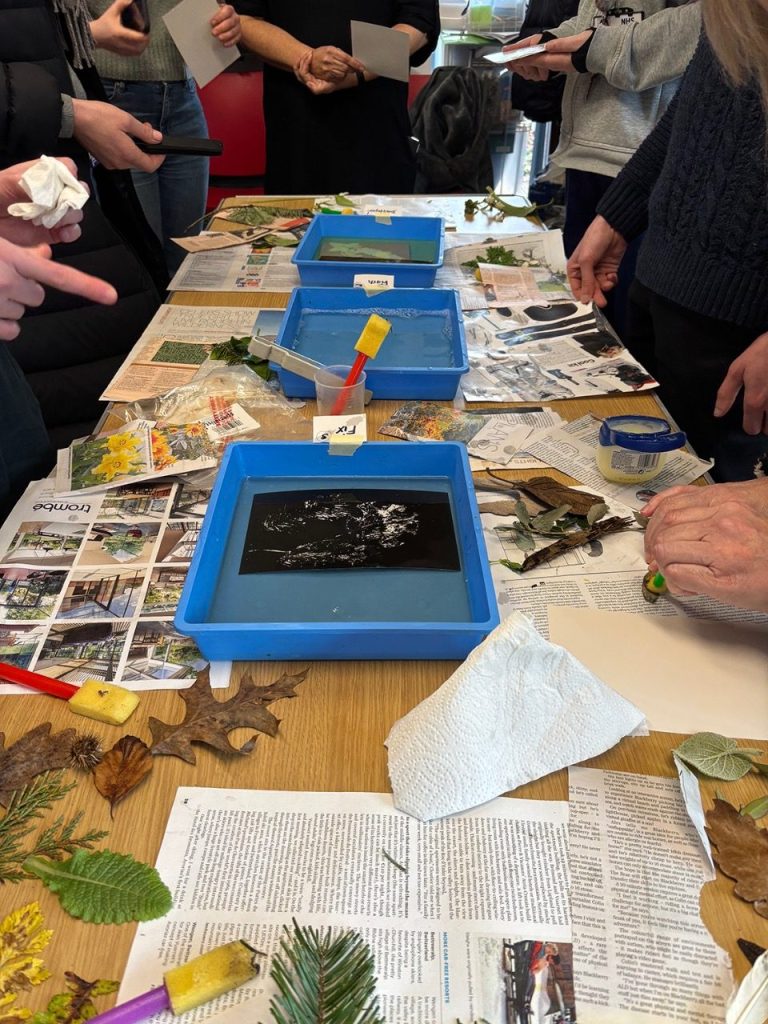

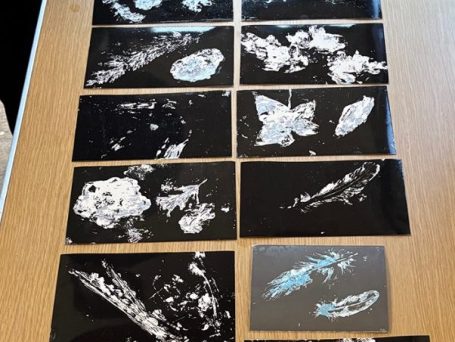

18
FEB
2025
Myth Makers: Rewriting Nature’s Stories
Last week, we gathered at the Baxter Park Pavilion for "Myth Makers: Rewriting Nature’s Stories”.
Myself (Inês) and Julie from the Collective, along with Hope from RSPB and Caishlan from Eden Project Dundee had planned an immersive storytelling workshop exploring nature, imagination, and our relationship with the environment.
We congregated and then went on a walk in the nearby nature of Baxter Park, looking at lichens, leaves and exploring the language we use when describing the natural world. Once back at the Pavilion, participants were invited to embark on a creative journey inspired by the path of a floating seed drifting down the River Tay (written by Caishlan).
The workshop encouraged participants to envision the adventures of a tiny seed—where it might travel, what challenges it might face, and how it would grow. Through guided exercises, everyone wrote their own unique stories through a game of “consequences”.
Collaboration is at the centre of what we do in our projects. By working with RSPB which champions nature conservation, and the Eden Project, known for its environmental education initiatives, this workshop highlighted the importance of storytelling as a tool for reconnecting with the natural world. We at the Art and Nature Collective brought an artistic lens to the experience, demonstrating how creativity can foster deeper ecological awareness.
Nature has always been a source of myth, inspiration, and wisdom. By rewriting nature’s stories, we are not only reimagining the world around us but also strengthening our role within it. This workshop provided a space for participants to reflect on their connection to nature, while also contributing to a larger conversation about conservation, creativity, and community.
We are incredibly grateful to everyone who took part in this inspiring event and to our partners for making it possible. Stay tuned for future workshops and opportunities to explore nature through art and storytelling!
We have permission to share all photos.


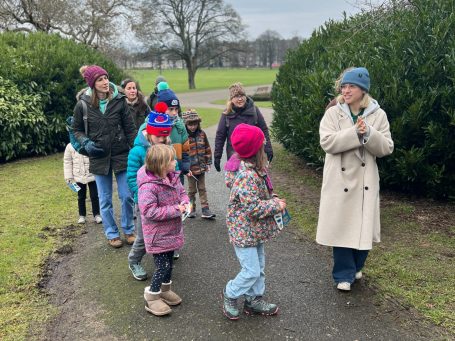


19
JAN
2025
A Day Amongst the Trees at Kinclaven Wood
This past Sunday, members of the Collective gathered at the enchanting Kinclaven Wood to share in our mutual curiosity for the natural world and bask in the presence of ancient trees. It was a day of connection—not only with one another but with the rich, living tapestry of the woodland around us. 💚🌳
Kinclaven Wood, recommended by the ever-inspiring Tansy Lee Moir, was the perfect setting for this exploration. Tansy generously shared her knowledge of the trees, unveiling their stories etched into bark and branches. The experience invited us to slow down, observe deeply, and appreciate the intricate relationships that shape this vibrant ecosystem.
As Inês-Hermione Mulford so beautifully put it, Kinclaven felt like “definitely a more than human presence.” There’s a certain magic in the way this forest embodies the interconnectedness of life—its trees, fungi, mosses, and animals quietly reminding us of the larger web of existence of which we’re all a part.
While we left our sketchbooks at home this time, the experience has already inspired ideas and plans. We’ll be returning during the bluebell season, ready to capture the magic of Kinclaven with pens and pencils in hand. The vibrant colors and soft light filtering through the bluebells will undoubtedly offer new perspectives and creative opportunities.
For now, we carry with us the memory of Kinclaven’s trees and their quiet wisdom—a reminder of the beauty and complexity of the natural world, and the joy of sharing that experience together.
If you haven’t yet visited Kinclaven Wood, we can’t recommend it enough. Whether to sketch, walk, or simply be still, there’s something uniquely restorative about spending time among these ancient trees.
We look forward to sharing what we create during the bluebell season and hope to inspire others to seek out their own connections to the natural world.
Until next time, here’s to curiosity, creativity, and the company of trees!


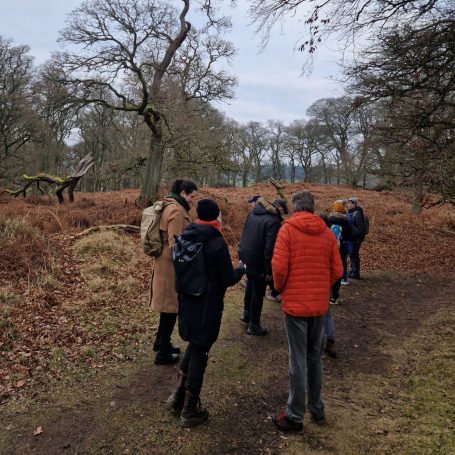


1
DEC
2024
Squirrels and Hedgehogs with Dundee Rangers at the Botanic Gardens
On the 1st of December I took the train to Dundee to join a ranger called Colin in the Botanic Gardens, where we delivered a workshop on squirrels and hedgehogs. Sadly, only two of the 8 booked participants turned up, but they were friendly and enthusiastic, and went for a wander with Colin around the gardens whilst I arranged the art materials ready for some creativity.
They returned an hour later, and together the 4 of us discussed the animals and evidence of animals they had seen, different conservation efforts across Scotland, and the state of funding for both conservation and the arts.
After having some lunch, we settled down to learn some drawing techniques.
First, we sketched hedgehogs in pencil, building up our drawings of animals using shapes, shading, and using a variety of marks to communicate different textures. We progressed to fine line pen, considering how different nib sizes, different pressures, and different movements can be used to develop a "repertoire" of marks.
Colin and the two participants drew brilliant hedgehogs, and we discussed different experiences of art education, and the importance of a space like the Botanic Gardens.
Once satisfied with our hedgehogs, we applied the techniques we had just learnt to drawing a squirrel in a similar way.
We then explored water based inks, using watercolour paper and paint brushes to experiment with the "wet-on-dry" and "wet-on-wet" techniques. We discussed how shapes and shadows can be used to communicate as much as edges do, and how we can have fun with colour and tone. The participants had a lot of fun painting squirrels and hedgehogs using this material until the end of the workshop.

"Colin was a great guide around the gardens & we really enjoyed his help on tree identification & his advice on using a bird song app.
Felicity is an excellent teacher. As an Art college graduate I can honestly say she was loads better in one afternoon than anyone I encountered in 3 years. Please pass that on!
I am delighted with my hedgehog & squirrel illustrations & she might even have helped me overcome a lifetime of avoidance of drawing."
- Elizabeth (Attendee)
29
NOV
2024
WayMarkers by ArtMovesFife: Connecting people, place and planet
On Friday 29 November opened ArtMovesFife’year-end reflection/celebration at the St Andrews Botanic Garden featuring work by Fife-based artists from the 2024 ArtMovesFife programme. Running for three days, the programme included a mini exhibition, with artist talks, and workshops/showcases.
Gillian McFarland, one of our Collective Artists founded ArtMoves Fife along with artist Kate Downie, an initiative that started in 2023 and has gone from strength to strength over the last year.
ArtMovesFife is a collaborative artwork centred around collective journeys on foot, by bicycle, by bus, boat or train exploring all corners of Fife (not just the scenic bits). These local journeys have become the test bed for discussion, ideas and art-making for positive environmental change through creative engagement.
It places local artists at the centre of their communities as drivers for environmental improvement.
The recent moves have been “A to B, Station to Station” Aberlour to Burntisland
where the group followed the coastal path and railway line, and incorporated art-making, walking, and meeting local artists all with the goal of “attentiveness and noticing”: birds, passing ships, seals, trains, geology and everything else.
“A to B, Station to Station” was quickly followed by “We Are Sixty-Four!” St Andrews to Glenrothes (and back). Where participants were ask to join Gillian and Kate for a “hop on, hop off experience on the wiggliest, rattliest bus route in Fife—namely, the epic Moffat & Williamson No. 64” bus that plies between St Andrews and Glenrothes, taking in 14 towns and villages along the way. With stops in Strathkinness, Letham and Falkland for art-making, not to mention ArtMove actions on the bus itself!
We’re thrilled to be partners with ArtMovesFife and are incredibly proud of all the hard work Gillian and Kate have put in to making it a reality. We’re also delighted that the communities are linking and growing together as ArtMovesFifers join up in the Collective and Collective artists join in with the ArtMoves Initiatives.
Tansy Lee Moir, one of our Collective artists has recently been attending the journeys and has had work on display with the WayMarkers exhibition at the The Boilerhouse, St Andrews Botanic Garden, where her series of experimental charcoal prints ‘A to B, a coastal journey’ were on display.
We like ArtMovesFife have a keen interest in connecting people, place and planet, and look forward to continuing to explore our partnership… an ArtMoves event for Collective members perhaps… you’ll have to wait and see next year!

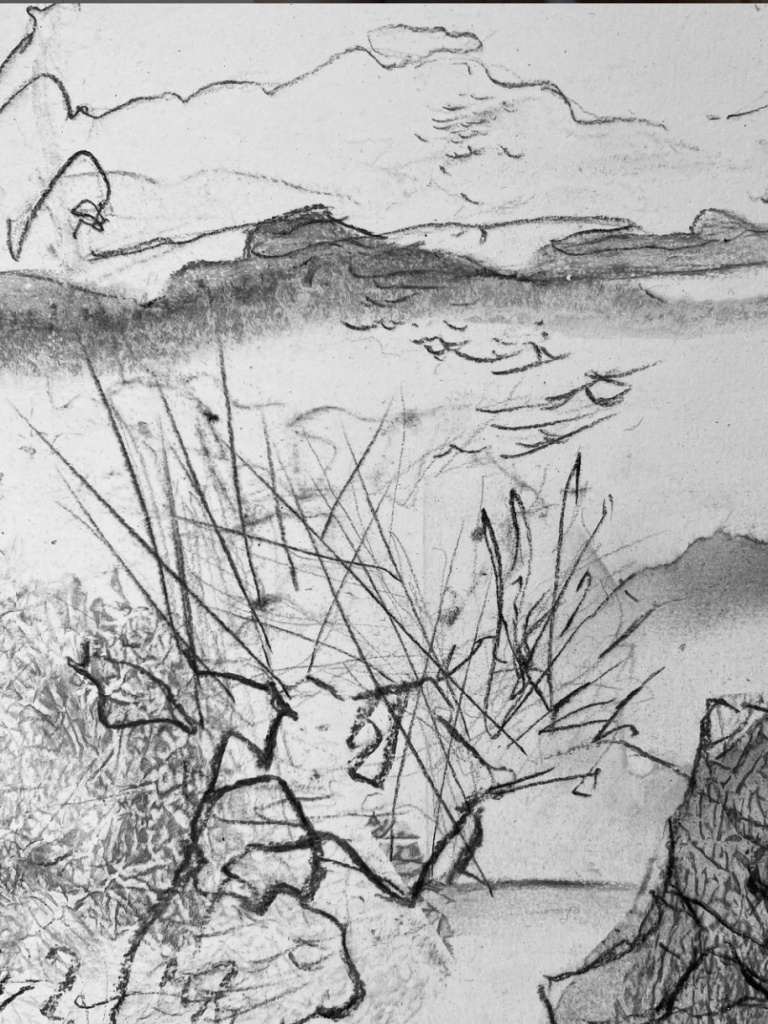
"I particularly enjoyed sitting quietly and drawing sounds, so have incorporated these quirky little marks into the images, along with other abstract charcoalyness suggesting the sounds and memories of the day.”
“I used the charcoal transfer technique I’ve been developing to layer, change and extend my markmaking for these works and the four drawings in sequence form a journey remembered in charcoal. I’m delighted they are joining the other artists’ work for the event and a huge thanks to Kate Downie and Gillian McFarland for their inspirational artistic leadership."
- Tansy Lee Moir
15
NOV
2024
"Understanding Arts Funding" - first of our professional practice webinar series
The Art and Nature Collective hosted its inaugural Professional Practice Webinar, marking the start of an exciting series aimed at addressing the key challenges artists face today. Designed to empower creative professionals, these webinars will focus on practical advice and actionable solutions for navigating the complexities of the art world.
For this first session, we were delighted to welcome Kathleen Glancy, Development Manager at The Fruitmarket Gallery, to share her expertise. With a wealth of experience as a Grants Manager and a strong background in arts and creative industries, Kathleen brought invaluable insights into fundraising, proposal writing, and navigating the often-complicated world of arts funding. Her session provided attendees with strategies for crafting compelling funding applications and tips for building sustainable careers in the arts.
The turnout and engagement were a testament to the demand for this type of support within the artist community. This webinar is just the beginning of a series aimed at tackling the hurdles that many creatives face, from funding and marketing to networking and exhibition opportunities.
Stay tuned for upcoming webinars as we continue to empower and inspire artists to thrive in their practices!
"That was so interesting, I'm excited for the next ones and to join the Collective!"
- Non-member
"Essential information that artists need to know and should ahve been taught about! Thank you so much for sharing this knoweldge. It's really appreciated. Thank you."
- Non-member

"Invaluable, thank you so much Kathleen"
- Collective Artist
"I feel ready to go back to my application now, thank you so much Inês and Kathleen"
- Collective Artist
"Thanks so much for organising this! I found the webinar incredibly useful and interesting. I would definitely be interested in learning more about the application process itself and putting together budgets etc!"
- Wenna King (Collective Artist)
"Brilliant Webinar. Thanks to you both"
- Rodney Mountain (Director of the Art and Nature Collective)
"More please!"
- Collective Artist
7
OCT
2024
October Mushroom Walk
On the 6th October we held a Guided Mushroom Walk at Dundee Botanic Garden with Fungi Expert David Mitchell
Despite the bad weather and a year of fewer mushrooms due to changing weather patterns, David led a fascinating guided walk around the stunning Dundee Botanic Garden!
David took us on a journey through the world of fungi, revealing the hidden wonders and ecological importance of these incredible organisms. As an added bonus, he brought in mock ups of pages for his upcoming book which he was also promoting the launch of.
We look forward to putting on another event for the launch of his exciting new book on fungi, inclusive of over 400 original paintings.

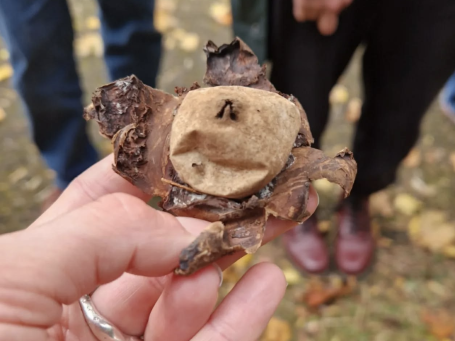
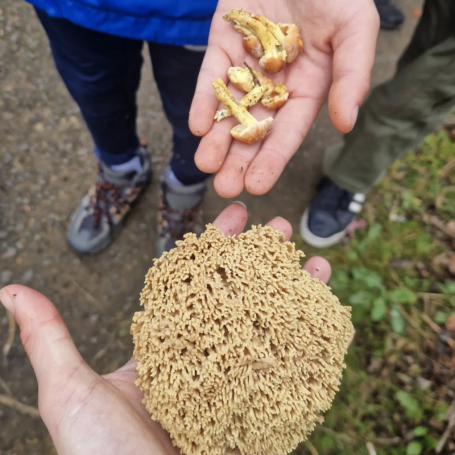




28
MAY
2024
Migrating Songbirds
🌿 Arrivals and Departures with RSPB Wild Dundee
On Sunday, we had the pleasure of hosting some members of the ScrapAntics CIC Family Club at the University of Dundee Botanic Gardens. It was a day filled with discovery as we delved into the sounds and songs of Spring.
With binoculars in hand, we marvelled at the sight of a beautiful Blackcap serenading from a branch above, shortly before hearing the unmistakable call of a Chiffchaff - but that wasn't all! We saw and heard Magpies, Great Tit, Robins, Siskins, a Chaffinch, Wood pigeons...we even saw evidence of a Sparrowhawk's hunt!
As part of our ongoing Arrivals and Departures project, we engaged in meaningful conversations about the reasons behind our wildlife's migrations, drawing parallels to our own journeys.
By partnering with the Art and Nature Collective, we were honoured to have Felicity Inkpen guide each participant in crafting a multi-media masterpiece. From sketching birds with simple shapes to illustrating migration paths with water and ink, and using collage techniques to capture the essence of birdsong, creativity truly flourished!
At RSPB Wild Dundee, we believe that collaboration lies at the core of every successful endeavour. A heartfelt thank you to Inês-Hermione Mulford for her invaluable support, Felicity for her inspiring facilitation, Riverside Nature Park for sharing Ian Ford's wealth of knowledge, and ScrapAntics Family Club for helping reach our participants.
"Thank you Hope & Felicity - excellent facilitation & a very enjoyable morning bringing together nature & art - great for families to spend time together. Magic!"
- Hope Busak, RSPB Scotland
On Sunday the 28th of April, I packed up a car with art supplies and drove over to Dundee to join RSPB representative Hope Busak and members of the ScrapAntics Family Club at the University of Dundee Botanic Gardens. Hope led us around the gardens where we looked and listened for signs of migratory birds arriving in Dundee: black caps, chiffchaffs and warblers. Back in the activities room, we all sat down with a cup of tea and a biscuit to discuss what we had seen, heard, and learnt, and turn it into art.
The participants were first guided through an observational drawing exercise: learning to look at birds with an artist's eye, breaking the image down into constituent geometric shapes, and then building up detail through shading and different types of mark-making. Their beautiful bird drawings were put to one side to do an all-together messier creative activity - exploring migration through the movement of water-based inks across paper. The participants were invited to draw out a map in clear water, then add the inks to the water marks, and see how the ink travelled. Finally we considered the birdsong we had heard, and how this could be represented in abstract shapes by using collage - the ripping of the paper providing a sound to add to the visual experience.
The ink-map, the paper-birdsong, and the drawing of the bird were then combined into one mixed media art piece. The participants showed their artistic flare as they combined the different elements in diverse and beautiful ways, each creating an artwork that was truly unique to them. There was lots of enthusiasm for these different ways of making art as the participants flourished in their own creativity.
Thank you so much to Hope for leading the workshop, and to Ines and the Art and Nature collective for bringing me to this botanic garden and this wonderful group of people.
- Felicity Inkpen, Collective Artist
“Thank you very much for these types of activities. The best thing is I never know we can do lots of things with just art and birds.” - Participant, Age 6

“the session was marvellous. Thank you so much Hope and Felicity. We were delighted to hear the songs of the birds, at the same time it was extremely wonderful Hope when hope was imitating those songs. You both made the session super awesome!” - Participant

“Thank you very much Hope and Felicity a very enjoyable facilitation and a very enjoyable morning bringing together nature and art. Great for families to spend time together – magic!” - Participant





"I loved Ian's talk. So informative, and then heading to riverside, was amazing seeing the Skylarks up close and in their natural environment. Also as a good punctuation for the day, the split of where we were helped to structure the day well." - Participant

"I enjoyed having people from all portions of society, and working together helped to make bonds and conversation/connection." - Participant
23
MAR
2024
Celebrating Skylarks
It was an immense pleasure to work with skylark expert, Ian Ford, to present a science-art
workshop about skylarks. The combination of seeing skylarks in the morning at the Riverside
Nature Park and using this experience to make a text and image collage was great fun! The magic of seeing skylarks was a wonderful start for an afternoon of thinking, writing and creating artwork about skylarks. The afternoon kicked off with my spoken word performance and short film to provide inspiration and get participants in the mood. Deconstructing the poems of George Meredith and Percy Shelley and using them in word games helped participants their own ideas and create a collage expressing what skylarks meant to them.
I was amazed by the diverse personal and individual responses; for example one participant
focussed on nesting and family, another the swooping dancing flight of the skylark and another developed an artwork which was a memorial of words and image for a friend who had died. One young participant created an image and words about climate change - uppermost in her mind. Hers was a unique and exceptional response. - she had cut the flying skylark in half. It was such a strong and moving image reflecting the damage to nature and biodiversity from climate change.
The workshop was designed to be inclusive with no prior skills required, with lots of discussion throughout providing an productive and creative environment. I hope that there are many more science art events!
- Linda Kosciewicz, Collective Artist
"I liked the word play a lot, and enjoyed Linda's performance. Lovely to hear/see how other creatives work, and form my point of view, interesting to experience the running of the workshop." - Participant



We need your consent to load the translations
We use a third-party service to translate the website content that may collect data about your activity. Please review the details in the privacy policy and accept the service to view the translations.
